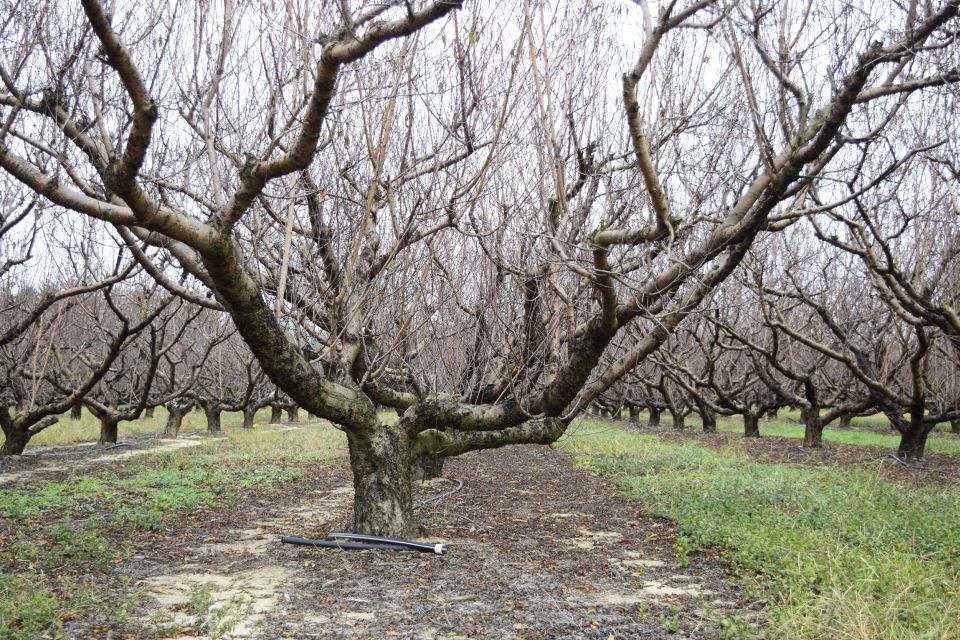New Herbicide Gives Fruit Growers Tool for Tough Weeds

A treatment of Pindar GT herbicide after harvest or prior to bud swell can reduce in-season input costs by reducing the number of weed control sprays needed. (Photo: Dow AgroScience)
Dow AgroSciences’ Pindar GT herbicide was approved in 2017 for use on bearing apples and peaches in the Carolinas, and apples in Virginia. It controls tough weeds, such as marestail (horseweed), pigweed, Virginia pepperweed, and dozens of others.
A dormant application of Pindar GT can help producers start the season with a clean orchard floor, minimizing competition from broadleaf weeds and rodent activity while maximizing radiant heat and orchard health. A 1.5- to 3-pint-per-acre preemergence or postemergence treatment of Pindar GT in the dormant period, prior to bud swell, can provide up to six months of residual control.
Andrew Bodie, a peach grower in South Carolina, says a dormant application of Pindar GT at a rate of 2 pints to the treated acre has performed “far better than the grower standard” on his farm.
“Pindar GT is giving me additional options for rotational programs to minimize potential resistance issues,” he says. “A new option is always good, and two products are better for rotation. With Pindar GT, we now have that.”
According to Bodie, Pindar GT herbicide, when applied during dormancy, greatly reduced the weed competition present for the remainder of the growing season. “I focused my field trials on an orchard that historically had a major pigweed problem, and I am pleased with the control we’ve achieved,” he says.
As an herbicide with two active ingredients, providing two modes of action — penoxsulam plus oxyfluorfen — it delivers weed control and long-lasting residual activity.
Pindar GT herbicide also tank-mixes well with other commonly used herbicides. For enhanced burndown activity, Pindar GT can be tank-mixed with other approved preemergence herbicides such as pendimethalin or oryzalin. For postemergence applications, it is recommended that producers consider tank-mixing Pindar GT with glyphosate, glufosinate, or paraquat.
Applications of Pindar GT are restricted to no more than 3 pints per acre in a single application, or more than a total of 4.5 pints per acre per year.










